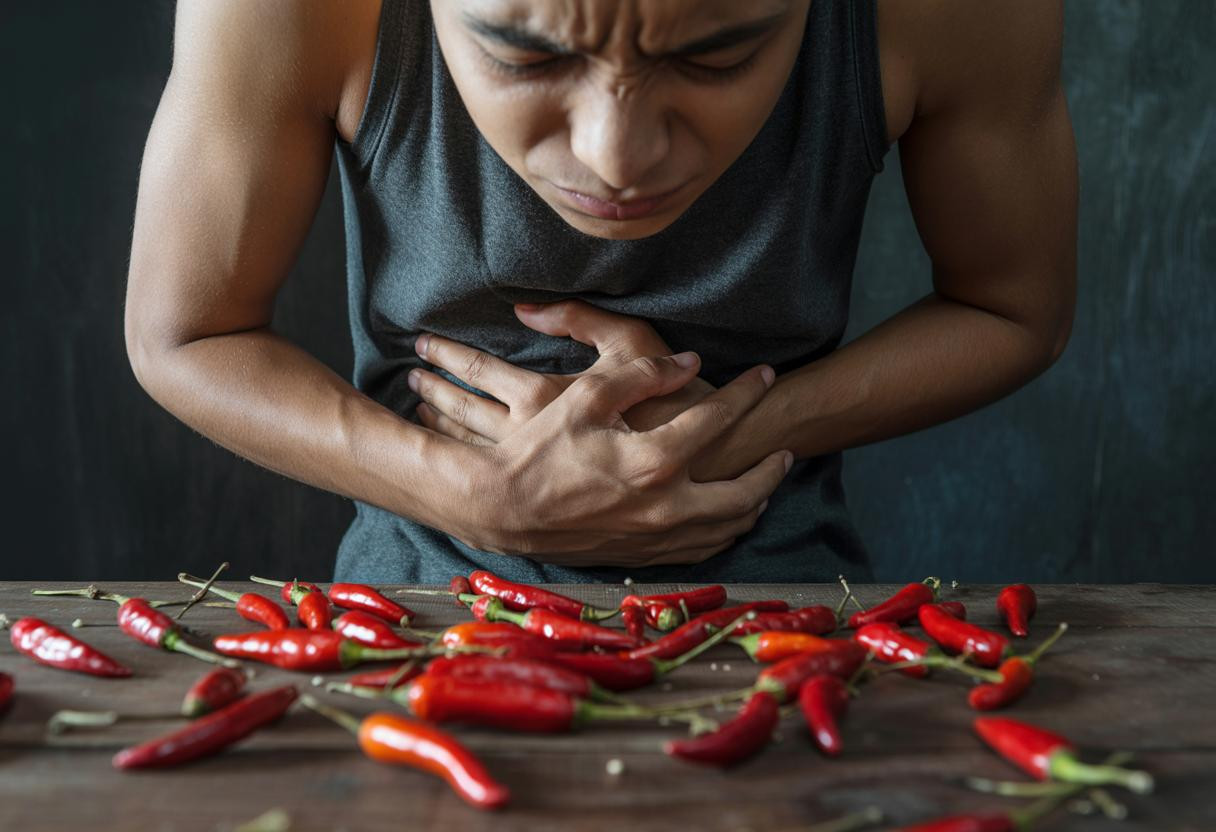The tragic death of 25-year-old Chinese content creator Qianqian from stomach cancer has sparked urgent medical warnings about excessive spicy food consumption, with her personal admission that she “loved eating chili” becoming a cautionary tale that’s reshaping how doctors view dietary lifestyle choices and cancer risk.
Qianqian battled mid-to-late stage stomach cancer for over a year before passing away in May 2025, and her case has prompted healthcare professionals to issue unprecedented warnings about the potential dangers lurking in our favorite fiery foods.
The emerging science behind spicy food and cancer connections
Recent medical research reveals a complex relationship between capsaicin consumption and gastric health that most people never consider. A comprehensive 2017 meta-analysis of 39 case-control studies found that high spicy food intake significantly increased cancer risk by 76%, particularly for gastric cancer.
However, the story isn’t straightforward. Conflicting evidence from a 2021 Chinese cohort study showed inverse associations, with daily spicy food consumption actually reducing stomach cancer risk by 11%. This contradiction highlights how cultural dietary patterns and health approaches can dramatically influence health outcomes.
The biochemical mechanism involves capsaicin activating TRPV1 receptors, potentially promoting oxidative stress and inflammation in gastric tissue. Regional dietary patterns and accompanying nutrient intake may explain why some populations show protection while others demonstrate increased risk.
Hidden warning signs most people ignore completely
Just like hidden health risks in daily habits, the effects of excessive spicy food consumption can remain dormant for years before manifesting as serious symptoms.
Medical experts identify three critical early warning signs: persistent abdominal pain that worsens after spicy meals, unexplained weight loss despite normal appetite, and dark stools or vomiting episodes following chili consumption.
The challenge lies in distinguishing between temporary gastric irritation and genuine pre-cancerous changes. Dr. researchers note that individual genetic predispositions, including polymorphisms in TRPV1 receptors, can make some people exponentially more vulnerable to capsaicin-induced damage.
Practical prevention strategies that actually work
The key isn’t complete spicy food elimination but strategic moderation. Health experts recommend limiting high-capsaicin consumption to 3-5 days per week maximum, paired with protective foods like garlic, ginger, and fermented vegetables that naturally counteract inflammatory responses.
Modern health monitoring technology offers unprecedented early detection capabilities. Health monitoring and early detection strategies now include wearable devices that can track digestive patterns and inflammation markers in real-time.
Essential lifestyle modifications for spicy food lovers
Dietary timing optimization
Consume spicy foods earlier in the day when gastric acid production is naturally lower. Avoid late-night chili consumption, which can exacerbate inflammatory responses during sleep recovery periods.
Protective food pairing
Combine capsaicin-rich foods with probiotics, fiber-rich vegetables, and anti-inflammatory compounds. This approach mirrors successful strategies used in regions where high spicy food consumption correlates with reduced cancer rates rather than increased risk.
What this means for your long-term health planning
Qianqian’s case underscores the importance of viewing dietary choices through a long-term health lens. While causation remains scientifically unproven, correlation patterns suggest that excessive capsaicin consumption combined with genetic predisposition creates a potentially dangerous health cocktail.
The medical community emphasizes that spicy food alone doesn’t cause stomach cancer, but it may accelerate existing risk factors like H. pylori infections or family genetic predispositions. Regular endoscopic screenings for high-risk individuals combined with moderate spicy food consumption represents the current gold standard for prevention.
This tragic case reminds us that even our most beloved culinary pleasures require mindful moderation, and that understanding our individual risk factors can make the difference between enjoying spicy foods safely and facing potentially life-threatening consequences.
